Wildlife in Stevenston
Forum rules
Here you can show the photographs you've taken. Use a storage agent such as https://www.imgur.com - our forum attachment system has limited storage and therefore reserved for photos in our Threetowners' Photo Album.
Here you can show the photographs you've taken. Use a storage agent such as https://www.imgur.com - our forum attachment system has limited storage and therefore reserved for photos in our Threetowners' Photo Album.
Re: Wildlife in Stevenston
Bullfinches are notoriously difficult to purposefully attract to gardens. When they do come, they are reported to take mainly black sunflower seeds and sunflower hearts. They also take bits of peanut dropped by other birds from bird feeders. However, even with these foodstuffs present, they’re very unlikely to come. When I see them in the garden, it’s almost always when they’re eating the buds of various shrubs and fruit trees. Ironically, planting fruit trees might be the best way to attract them, such is their love of eating their buds! They’re very shy and fond of dense cover - so dense, shrubby cover in the garden is probably an important factor too.
Iain
Iain
Re: Wildlife in Stevenston
Plant almond trees they love to eat the sweet buds in Spring.
Re: Wildlife in Stevenston
An Early Thorn moth on the Ardeer Peninsula last week. It's so called because its caterpillar has evolved to look like a thorny twig. The moth itself is also boasts convincing camouflage. It's one of the only moth species to rest with its wings closed together. There are two generations, one in April and one again in mid-summer, the second generation having a distinct purple tinge.
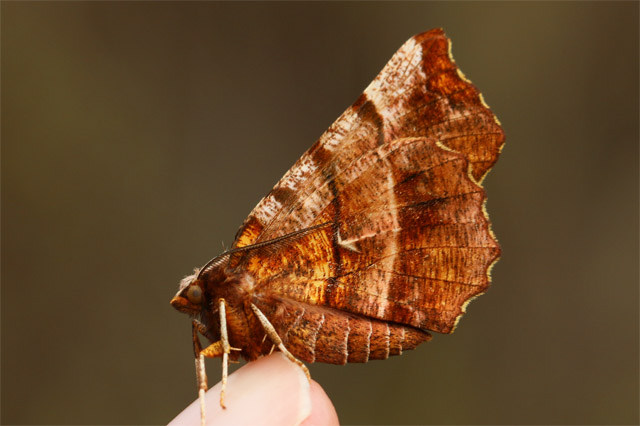

Re: Wildlife in Stevenston
Just got a cheap bridge camera like 2 weeks ago. Giving it a shot. Can't exactly find the kind of wildlife others are posting. Have to settle for something more common 




Enjoy Depression: It's all you've got to look forward to-Eeyore
Re: Wildlife in Stevenston
That's exactly where most of us started with wildlife Pedantic. 
Re: Wildlife in Stevenston
A rather distant shot of a Yellow Wagtail at Ardeer Quarry yesterday. It was feeding on insects in the waterlogged lawn which surrounds the Ardeer Rec Pond. They’ve undergone a massive decline in Scotland over the past few decades. They're now a great rarity in Ayrshire: no longer breeding in the county, they tend only to be (very rarely) encountered on migration in spring. Drainage of wetlands, changes in farming methods and unknown factors on their wintering grounds south of the Sahara might all be playing a part in their decline.
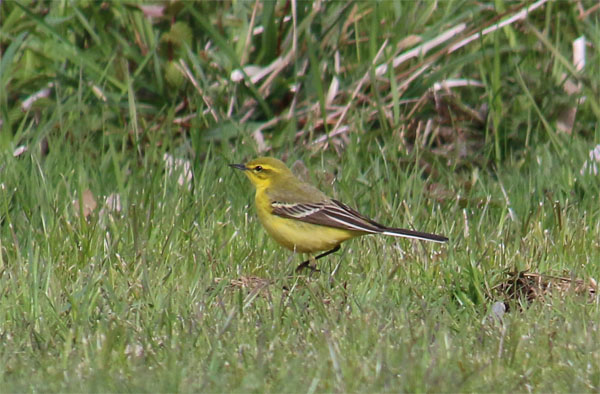

Re: Wildlife in Stevenston
Elaphrus cupreus and Elaphrus riparius, two species of ground beetle, on the Ardeer Peninsula a few weeks ago. These closely related species have similar lifestyles, hunting on open ground near standing water. They’re most often encountered running across damp, bare ground on hot days. On the Ardeer Peninsula they can be abundant in flooded sandy areas.
When I find one of these species scuttling about, I usually find the other species within a few feet of it.
Elaphrus riparius is smaller and more brightly metallic green. It’s also rarer, despite having similar habitat requirements.
350 species of ground beetle occur in Britain and Ireland. The Elaphrini family contain some of the more unusual-looking species, with huge eyes, coarsely cratered bodies and metallic colouration.
Elaphrus cupreus
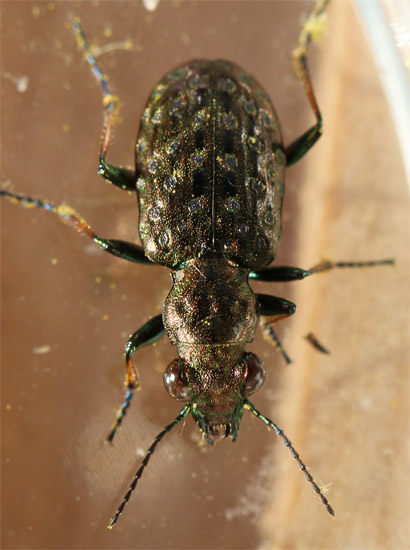
Elaphrus riparius
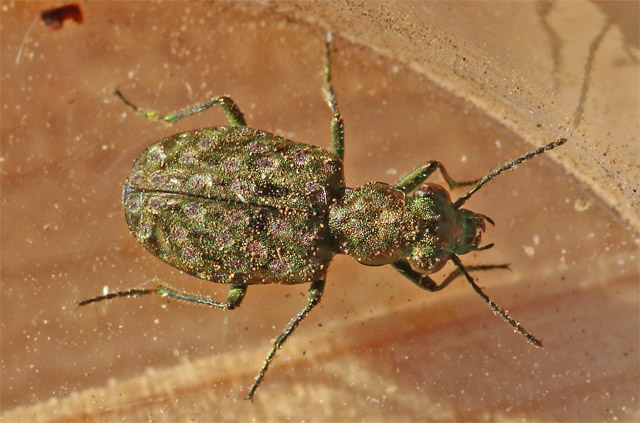
When I find one of these species scuttling about, I usually find the other species within a few feet of it.
Elaphrus riparius is smaller and more brightly metallic green. It’s also rarer, despite having similar habitat requirements.
350 species of ground beetle occur in Britain and Ireland. The Elaphrini family contain some of the more unusual-looking species, with huge eyes, coarsely cratered bodies and metallic colouration.
Elaphrus cupreus

Elaphrus riparius

Re: Wildlife in Stevenston
A Sandwich Tern fishing off the eastern edge of the Ardeer Peninsula at the beginning of May. It’s slim-winged, fork-tailed, black-capped appearance distinguishes it from the ubiquitous seagulls - as does it’s rasping call. They’re one of the first migrants to arrive in March and quite a few stay around into autumn. I photographed this one fishing from the jetty on the peninsula.
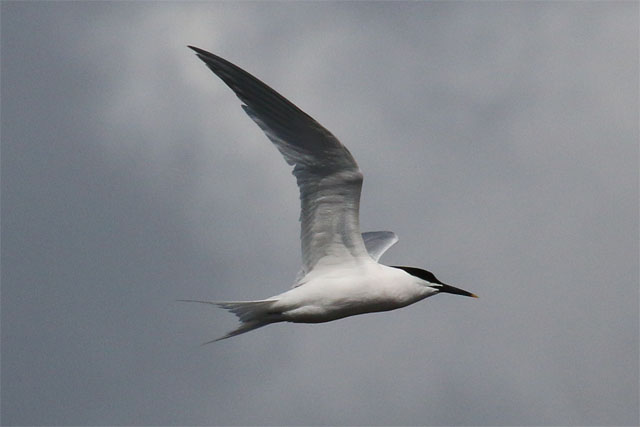
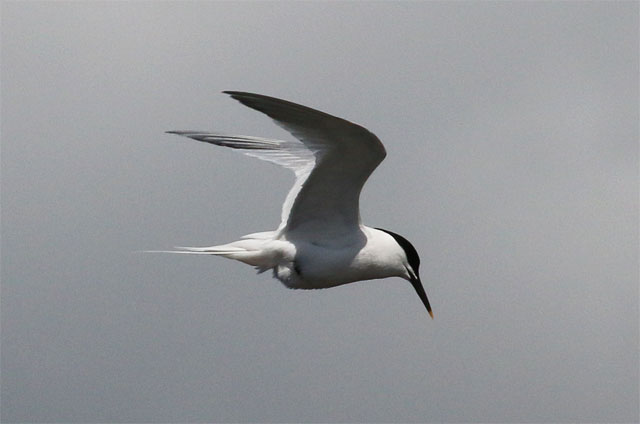


Re: Wildlife in Stevenston
How common those birds were round about the Station bar area in Stevenston when I was a lad. I can remember them hunting insects or flying ants. Their forked tails and lovely white feathers were a joy to see.
Re: Wildlife in Stevenston
Please to announce that the swans at the White Wife have hatched and they look a fine bunch. Incidentally the cobb is an aggressive chap whereas the cob at Ardeer quarry is a friendly soul who will take wholemeal bread from your hand and no hissing. I know that white bread is the usual offering and its not supposed to be good for them but they look well enough on it.
- georgersweir
- Mega Heid Poster

- Posts: 1653
- Joined: Mon Jul 13, 2009 1:12 pm
- Location: Ayr, (married to an Ardrossanite)
- Contact:
Re: Wildlife in Stevenston
We had a bullfinch visit our garden yesterday. Initially attracted by peanuts, the bird quickly spotted seeding dandelions and then had a feast on the seeds. Quite funny seeing it on the grass with head almost covered in the white feathery seeds as it munched through four or five stalks... Instead of fruit trees, to attract bullfinches, try dandelions - but don't let your neighbours see them seedingiain wrote:Bullfinches are notoriously difficult to purposefully attract to gardens. When they do come, they are reported to take mainly black sunflower seeds and sunflower hearts. They also take bits of peanut dropped by other birds from bird feeders. However, even with these foodstuffs present, they’re very unlikely to come. When I see them in the garden, it’s almost always when they’re eating the buds of various shrubs and fruit trees. Ironically, planting fruit trees might be the best way to attract them, such is their love of eating their buds! They’re very shy and fond of dense cover - so dense, shrubby cover in the garden is probably an important factor too.
Iain
I'm still saving up for a signature.
Re: Wildlife in Stevenston
George, I think your Bullfinch anecdote is one of the best adverts one can get for leaving a few weeds in the garden!
Below is a female Lasioglossum villosulum, a species of solitary bee, on the Ardeer Peninsula this April. It's common and widespread in southern Scotland, but absent in the north. On a hot, sunny day on the Peninsula, it’s hard to take a few paces without encountering a dandelion-type flower with one of these bees feeding on it.
Lasioglossum bees are generally all black, sparsely-haired and 4-8mm long, making it very difficult to tell the different species apart. Identification usually depends on observing differences in face length, shininess and subtle body sculpturing.
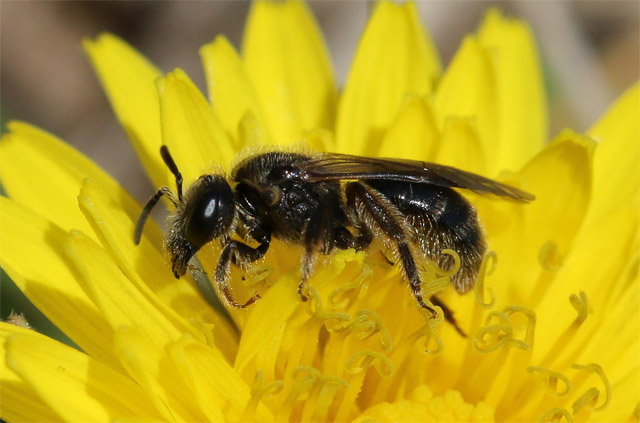
Below is a female Lasioglossum villosulum, a species of solitary bee, on the Ardeer Peninsula this April. It's common and widespread in southern Scotland, but absent in the north. On a hot, sunny day on the Peninsula, it’s hard to take a few paces without encountering a dandelion-type flower with one of these bees feeding on it.
Lasioglossum bees are generally all black, sparsely-haired and 4-8mm long, making it very difficult to tell the different species apart. Identification usually depends on observing differences in face length, shininess and subtle body sculpturing.




